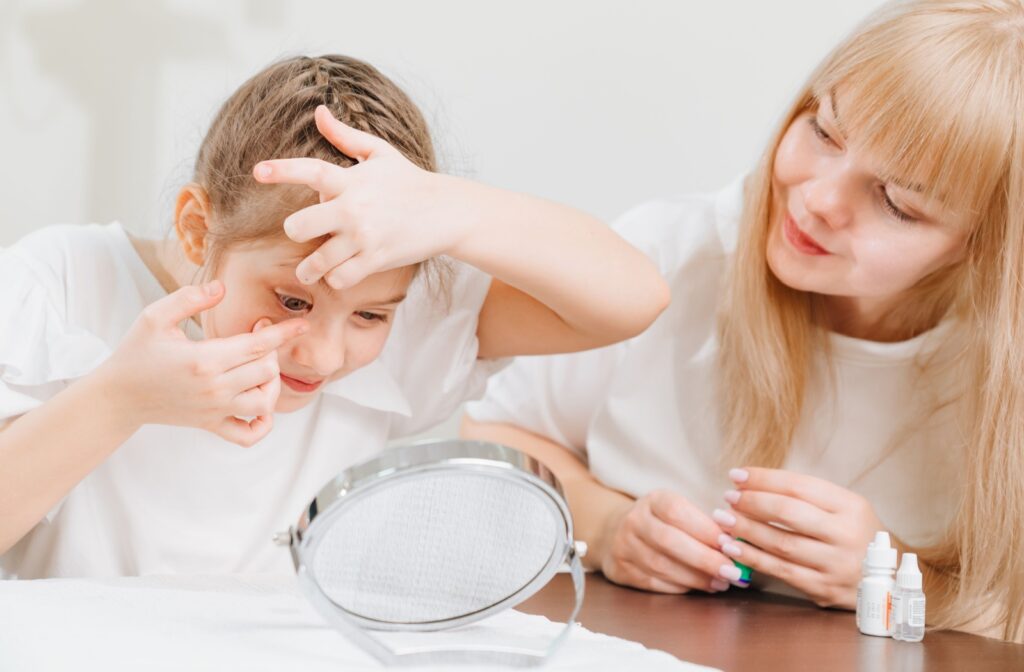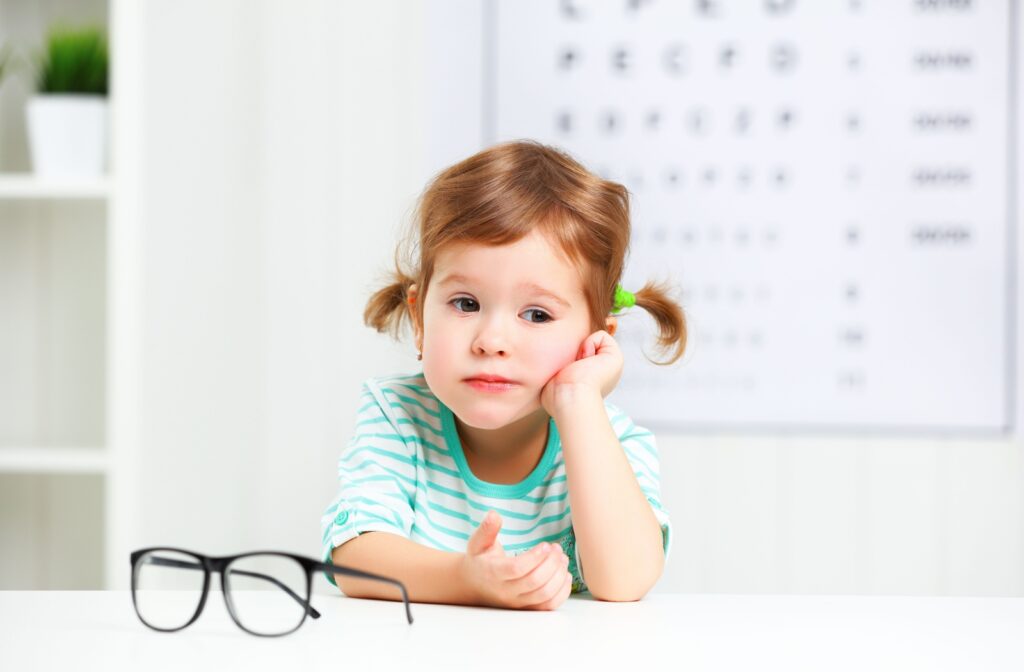If your child is nearsighted, the everyday challenges of myopia may already be on your mind. Struggling to see the whiteboard, squinting at distant objects, or even experiencing headaches from prolonged reading or screen time can all be signs of this common vision condition.
While myopia cannot be completely reversed, there are effective ways to slow down its progression and manage its impact. By being proactive, you can set your child up for a future of clear vision. It all starts now.
What Is Myopia?
Myopia, often called nearsightedness, is a condition where close objects appear clear, but distant objects appear blurry. This happens because the shape of the eye causes light to focus incorrectly, falling short of the retina instead of directly on it.
Healthy vision relies on light entering the eye through the cornea and lens, which focuses the light onto the retina at the back of the eye. The retina processes this light and sends signals to the brain to create clear, crisp images. However, in myopic eyes:
- The eyeball may grow longer than normal, or
- The cornea may curve too sharply
This distortion prevents light from focusing properly, leading to blurry distance vision.
Myopia typically begins in childhood and can progress until early adulthood. High myopia (severe cases of nearsightedness) can increase the risk of conditions like:
- Cataracts
- Glaucoma
- Macular degeneration
- Retinal detachment
People with myopia are more likely to have kids who also have myopia. However, while genetics can play a role, that’s not the whole story. Environmental factors such as prolonged use of digital devices, a lot of time spent reading up close, and limited time outdoors can also contribute to its development.
Addressing Nearsightedness with Myopia Control
While any changes myopia causes to the eye’s shape cannot be undone, modern optometry has developed several tools to manage its progression. Of course, glasses and contact lenses can correct blurry vision, but myopia control aims to slow the eye’s elongation. By doing this, it can prevent the underlying issue causing myopia to worsen.
Some of your options for this include:
Multifocal Lenses
Multifocal lenses are a modern solution for slowing myopia progression in kids and teens. Available as both spectacles and soft contacts, these specialized lenses correct distance vision in the center while creating a defocusing effect in the outer areas.
This defocusing tells the brain to slow down any excessive eye growth, effectively reducing myopia progression. Studies show significant results when using multifocal lenses, making them a reliable choice for families eager to address their child’s developing nearsightedness.

Ortho-K Lenses
Orthokeratology (or ortho-k) is another innovative option. This method involves your child wearing specially designed gas-permeable contact lenses overnight, which gently reshape the cornea.
When they remove the lenses in the morning, they can enjoy clear, unaided vision during the day. Their eyes will slowly return to their normal shape, so they’ll need to keep wearing the ortho-k lenses at night. Beyond providing temporary correction, ortho-k has been shown to reduce myopia progression in children by around 50%.
Atropine Eye Drops
Another myopia control method involves low-dose atropine eye drops. When used in smaller concentrations, these drops relax the eyes’ focusing mechanism, which can help slow eyeball elongation.
Children typically use these drops at night, which helps minimize side effects like light sensitivity. Atropine won’t correct any vision issues, but research has shown its ability to reduce myopia progression, especially when combined with other vision correction methods.
Simple Lifestyle Adjustments to Treat Myopia
Alongside myopia control, small lifestyle changes can protect your child’s eye health and set them up for success. Here are some of our tips:
Reduce Screen Time
Spending too much time on screens or doing close-up work can strain young eyes. Enforce regular screen breaks and generally reduce the amount of time they spend on close work. Try following the 20-20-20 rule: every 20 minutes, take a 20-second break and look at something at least 20 feet away.
Spend More Time Outdoors
Spending time in natural sunlight can help lower the risk of developing myopia and may even slow it down. Activities like playing sports or visiting the park, which combine being active and looking at things in the distance, are especially helpful.
Prioritize Routine Eye Exams
Regular eye exams are essential for keeping your child’s eyes healthy. These check-ups help monitor their vision and make any necessary adjustments to their myopia management plan.
By following these simple tips and working with your optometrist, you can support your child’s eyesight now and help protect it for the future.
We’re Here for Your Child’s Eye Health
Managing myopia is an active process that requires the right tools, strategies, and guidance. At Restore Vision Center, we offer personalized myopia control treatments designed to fit your child’s needs. From multifocal lenses and ortho-k to low-dose atropine drops, our team provides professional care to protect and improve vision. Schedule an eye exam today to learn how we can help manage myopia effectively. Together, we’ll create a personalized plan for healthier vision and a clearer future.




